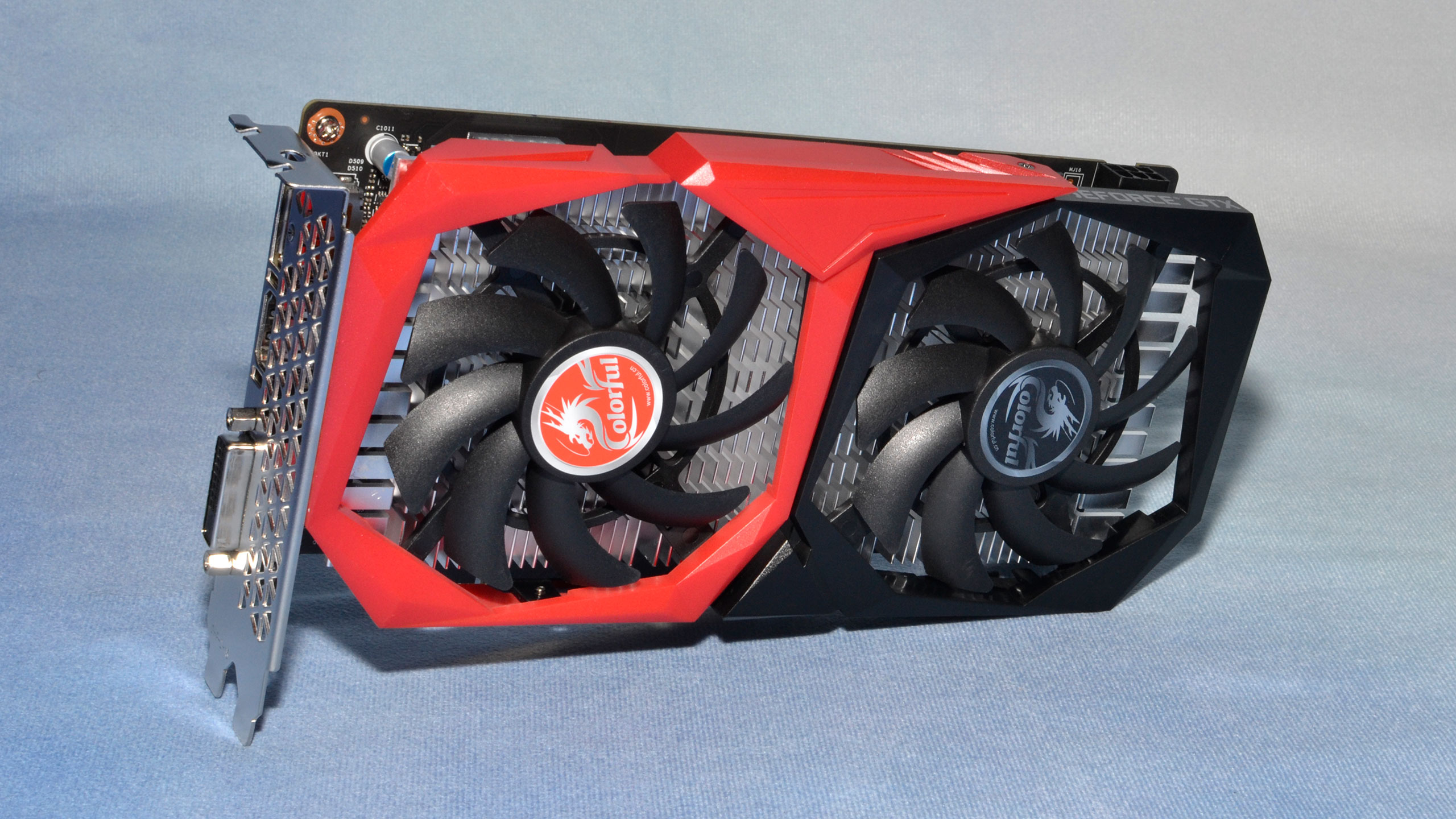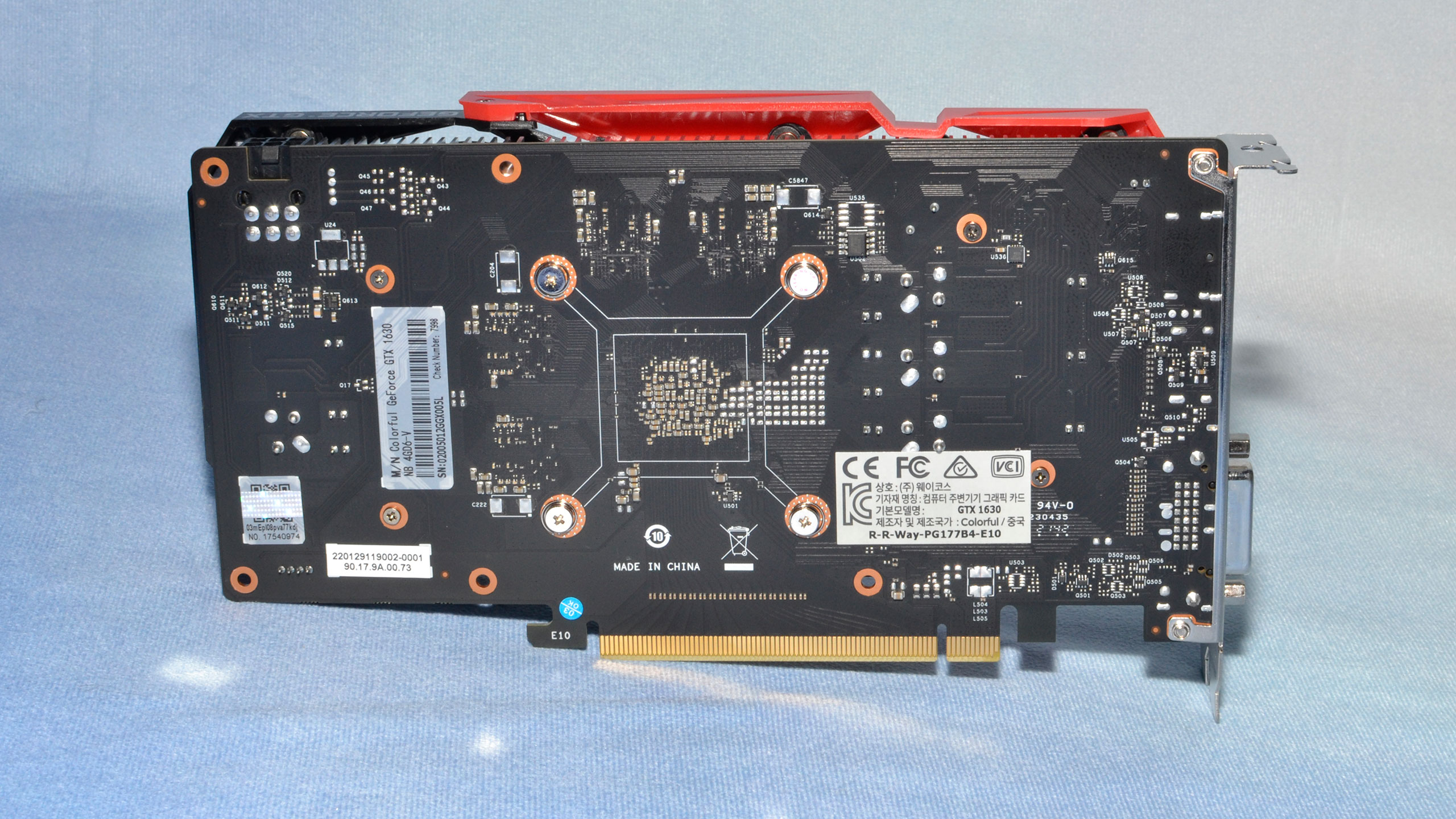Why you can trust Tom's Hardware
It's hard to find things to like about the GTX 1630. If it arrived last year, at this same price, it might have had a few takers in the midst of the global GPU shortages. Today? It's too slow and too expensive. It's frankly absurd that some places like EVGA have GTX 1650 and GTX 1650 Super cards that cost less than the GTX 1630.
Maybe the pricing will correct, but realistically it needs to be cut in half for the cards to make any sort of sense. As a replacement in the product stack for the aging GTX 1050 — which hasn't been manufactured for a few years now, as far as we can tell — a GTX 1630 with a similar $110 price point would have been okay. You get double the VRAM at least, which means some of the games that choke on 2GB cards could still run. Alternatively, Nvidia could have made this a GT 1030 replacement, priced below $100. It still wouldn't be fast, but at least it would have the ultra-budget pricing angle going for it.
With AMD's Radeon RX 6400 delivering significantly better performance for $50 less, the only real selling point for the GTX 1630 would be its media encoding capabilities. If that's your primary consideration, waiting for Intel's Arc A380 to ship in the US would be a better choice. Gaming performance might be questionable, but the AV1 media encoding capabilities look quite promising.
The Turing TU117 GPU was never a potent chip, but disabling half of the cores and memory channels makes a relatively weak GPU into a solution that can barely hope to compete with integrated graphics. Yes, it's faster than the GTX 1050, but it's also slower than the GTX 1050 Ti, and both of those can readily be picked up used for about $100 these days.
You don't even get extra features compared to the 1050 Ti that would warrant the upgrade — it's the same NVENC hardware, more or less, with the same amount of VRAM, same video outputs, and worse performance. Power efficiency isn't an advantage either, as the GTX 1050 Ti only used 58W in our gaming test, and both are nominally 75W cards. So what's the point?
The point is to make something out of nothing, as far as I can tell. Nvidia probably had some TU117 chips that had functional NVENC hardware but with some of the memory controllers and SMs that couldn't hit the GTX 1650 or MX450 requirements. Just like there are GTX 1650 cards made using TU106 silicon, but with all the ray tracing and tensor core hardware disabled, and with only 14 of the potential 36 SMs enabled, now we have a GTX 1630 made with chips where 50% of the cores and memory controllers apparently failed.
If Nvidia or its partners priced this appropriately, some people would inevitably find a use for it. That means that it needs to cost significantly less than the pre-existing GTX 1650 cards, since those are universally faster. Even Intel's Arc A380 will likely deliver superior performance, though it's a gamble on whether or not Intel will ever get the drivers to fully functional status. We'll hopefully have a card soon that we can put through its paces.
- MORE: Best Graphics Cards
- MORE: GPU Benchmarks and Hierarchy
- MORE: All Graphics Content
Get Tom's Hardware's best news and in-depth reviews, straight to your inbox.
Current page: Bottom Line: Colorful GeForce GTX 1630
Prev Page Colorful GeForce GTX 1630: Power, Temps, Noise, Etc.
Jarred Walton is a senior editor at Tom's Hardware focusing on everything GPU. He has been working as a tech journalist since 2004, writing for AnandTech, Maximum PC, and PC Gamer. From the first S3 Virge '3D decelerators' to today's GPUs, Jarred keeps up with all the latest graphics trends and is the one to ask about game performance.
-
King_V Upon reading this review, I feel that I owe you an apology for being such a proponent for the GPU Battle of Meh...Reply
Uh, but, I guess it's better than the 1050 non-Ti, so, uh, that's . . no, I can't even get myself to say it's some kind of victory.
My sympathies for your suffering on this one, @JarredWaltonGPU -
Eximo OEMs are still selling GTX1650 and 1650 Super in low end gaming desktops. Just don't see this happening, practically e-waste unless they cut the price in half.Reply -
PiranhaTech Reply
I don't mind weak GPUs from Nvidia or AMD as long as they are priced okay. There's been a few times where an integrated GPU doesn't work for whatever reason (for a PC not used for gaming), or my good GPU goes out, I'm short on money, and I need a working PC.King_V said:Upon reading this review, I feel that I owe you an apology for being such a proponent for the GPU Battle of Meh...
Uh, but, I guess it's better than the 1050 non-Ti, so, uh, that's . . no, I can't even get myself to say it's some kind of victory.
My sympathies for your suffering on this one, @JarredWaltonGPU
They definitely have their uses. However, come on! With that kind of performance, be $120 at most, probably $80-100. It's 75W on top of all of this. I could be more forgiving if it ran at 50W or lower. Give us something, Nvidia! The GT 1030 is a 30W GPU -
King_V Reply
Well, as predicted when the specs were announced and when the card first came out, Nvidia released a GPU that makes the RX 6400 look like a hero.PiranhaTech said:I don't mind weak GPUs from Nvidia or AMD as long as they are priced okay. There's been a few times where an integrated GPU doesn't work for whatever reason (for a PC not used for gaming), or my good GPU goes out, I'm short on money, and I need a working PC.
They definitely have their uses. However, come on! With that kind of performance, be $120 at most, probably $80-100. It's 75W on top of all of this. I could be more forgiving if it ran at 50W or lower. Give us something, Nvidia! The GT 1030 is a 30W GPU -
waffleinc When I first heard about this GPU, I was somewhat excited. At the time, I needed a cheap and cheerful GPU for nothing more than basic home use and video encoding. I figured that as long as it's only $100, that would be fine, even with the low core count and slow memory. Then I saw that it would be $200 and 75w. Yeah, no thanks.Reply -
Giroro What version of NVENC does it have?Reply
I assume the older/worse version of the GTX 1650... If so, I wouldn't even want this for $100... Maybe $80.
With the updated encoders, I could see myself paying nearly $125 as an entry point to throw my old 3700x into a dedicated streaming PC.
But today Newegg has a 1660 Super for $210 ($30 MIR), and you can get an RTX 2060 for $250 (which also completely embarrasses the pricing of the RTX 3050).
Nvidia needs to step back get real with how they're letting their board partners price their crappy new cards. -
JarredWaltonGPU Reply
I'm still waiting for the "joy" of testing Arc A380. I mean, technically it should perform pretty decently based on specs. But I am not at all looking forward to the driver shenanigans I'll likely have to deal with. On the bright side, it's taken so long to get the GPU shipped from China that drivers will hopefully be quite a bit better by the time the card arrives! Also, AV1 encoding should be interesting, assuming it works properly. I'll try to encode and upload the A380 video using its AV1 hardware. 🙃King_V said:Upon reading this review, I feel that I owe you an apology for being such a proponent for the GPU Battle of Meh...
Uh, but, I guess it's better than the 1050 non-Ti, so, uh, that's . . no, I can't even get myself to say it's some kind of victory.
My sympathies for your suffering on this one, @JarredWaltonGPU -
Thunder64 The article basically says "Don't buy this crap" and yet 2/5 stars. What is a one star product? This costs the same as much better cards and still requires external power.Reply
Giroro said:What version of NVENC does it have?
I assume the older/worse version of the GTX 1650... If so, I wouldn't even want this for $100... Maybe $80.
With the updated encoders, I could see myself paying nearly $125 as an entry point to throw my old 3700x into a dedicated streaming PC.
But today Newegg has a 1660 Super for $210 ($30 MIR), and you can get an RTX 2060 for $250 (which also completely embarrasses the pricing of the RTX 3050).
Nvidia needs to step back get real with how they're letting their board partners price their crappy new cards.
Or for $10 more on Amazon you could get an RX 6600. That would have a bit more performance but more importantly 8GB of RAM.
JarredWaltonGPU said:I'm still waiting for the "joy" of testing Arc A380. I mean, technically it should perform pretty decently based on specs. But I am not at all looking forward to the driver shenanigans I'll likely have to deal with. On the bright side, it's taken so long to get the GPU shipped from China that drivers will hopefully be quite a bit better by the time the card arrives! Also, AV1 encoding should be interesting, assuming it works properly. I'll try to encode and upload the A380 video using its AV1 hardware. 🙃
How are you even going to review it? Intel should betting more flak about having to put games into "tiers". Do you separate your review by tier? The conclusion could be quite different depending on what you intend to play. -
missingxtension This is just a slap in the face, so disrespectful. Rx6400 was so disrespectful, then Nvidia comes and "hold ny beer".Reply
I am waiting to see if Intel at least ca do something reasonable for the price, I just can't see Intel being good at pricing. But this guys here make em look like the value leader. Wait till the recession and shrinking computer market comes, they are trying to cause it. -
hannibal Nvidia knows exactly how fast (slow) this GPU is! When this is $199, just ques how much more faster GPUs are gonna cost!Reply
4050 should cost douple of this gpu so $400 and that still makes 4050 to look good compared to this gpu.
The GPU price hike is not over, at least according the Nvidia!

